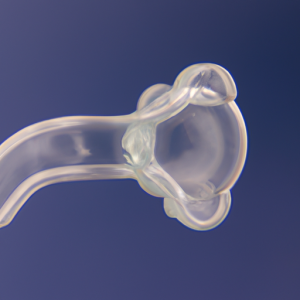Orthodontics is a specialized field of dentistry that focuses on diagnosing and treating issues related to the alignment and positioning of teeth and jaws. Whether it’s crooked teeth, overcrowding, or bite problems, orthodontics offers a range of solutions to help improve oral health and enhance one’s smile. In this comprehensive guide, we will delve into the world of orthodontics, providing insights into its diagnosis, treatment options, symptoms, and causes. From understanding the basics to exploring the latest advances in orthodontic care, this article aims to equip you with the knowledge needed to make informed decisions about your dental health. So, let’s dive in and discover the transformative power of orthodontics.
1. Understanding Orthodontics: A Comprehensive Guide to Diagnosis and Treatment
Orthodontics is a specialized field of dentistry that focuses on diagnosing and treating issues related to misaligned teeth and jaws. This branch of dentistry aims to improve the overall appearance and functionality of the mouth, leading to a healthier and more confident smile. Understanding the fundamentals of orthodontics is essential for individuals seeking treatment or simply wanting to learn more about the subject.
Diagnosis is the first step in orthodontic treatment. During this process, the orthodontist carefully examines the patient’s teeth, jaws, and facial structure. This evaluation helps to identify any irregularities, such as crooked teeth, overcrowding, overbite, underbite, or crossbite. X-rays, photographs, and impressions of the teeth may be taken to aid in the diagnosis.
Once a diagnosis is made, the orthodontist develops a personalized treatment plan. The treatment options can vary depending on the severity of the condition and the patient’s age. Common orthodontic treatments include braces, aligners, and other dental appliances. Traditional braces consist of metal brackets and wires that gradually shift the teeth into their correct positions. On the other hand, aligners, such as Invisalign, are clear, removable trays that are custom-made to fit over the teeth and gradually move them.
Orthodontic treatment not only improves the appearance of the teeth but also addresses functional issues. Misaligned teeth can cause difficulties in chewing, speaking, and even breathing. By correcting these issues, orthodontics can enhance overall oral health and improve quality of life.
Symptoms of orthodontic problems can vary, and it is essential to recognize them early. Some common symptoms include irregular spacing between teeth, difficulty in biting or chewing, speech problems, mouth breathing, and excessive wear on specific teeth. If any of these symptoms are present, it is advisable to consult an orthodontist
2. Identifying Symptoms and Causes: What to Look for in Orthodontic Issues
Orthodontic issues, such as malocclusions (improper bites) and crooked teeth, can have a significant impact on an individual’s oral health and overall well-being. Identifying the symptoms and causes of orthodontic problems is crucial for timely diagnosis and effective treatment. By recognizing the signs early on, individuals can seek orthodontic intervention promptly, leading to improved outcomes and a healthier smile.
One of the most apparent symptoms of orthodontic issues is misaligned teeth. This can manifest as overcrowding, where the teeth are tightly packed together, or as gaps between teeth. Additionally, an overbite or underbite, where the upper or lower teeth protrude excessively, can also indicate an orthodontic problem. These issues can affect the appearance of one’s smile and may lead to difficulties in chewing and speaking properly.
Another symptom to look out for is jaw pain or discomfort. Misaligned teeth can put excessive pressure on the jaw joint, leading to temporomandibular joint (TMJ) disorders. TMJ disorders can cause pain, clicking or popping sounds, and limited jaw movement. Individuals experiencing these symptoms should consult with an orthodontist to determine if orthodontic treatment is necessary.
While symptoms are crucial in identifying orthodontic issues, understanding the underlying causes is equally important. Genetics play a significant role in the development of orthodontic problems. If parents or siblings have experienced orthodontic issues, such as malocclusions or crooked teeth, there is a higher likelihood of their children experiencing similar problems. Additionally, certain habits during childhood, such as thumb sucking, tongue thrusting, or prolonged pacifier use, can contribute to the development of orthodontic issues.
Furthermore, early loss of primary teeth or trauma to the mouth can disrupt the normal eruption pattern of permanent teeth, leading to misalignments. Poor oral
3. Exploring Treatment Options: The Latest Advances in Orthodontic Care
Orthodontic treatment has evolved significantly over the years, thanks to the continuous advancements in dental technology and techniques. These innovations have revolutionized the field of orthodontics, allowing for more efficient and effective treatments. Today, patients have access to a wide range of treatment options tailored to their specific needs and preferences.
One of the latest advances in orthodontic care is the introduction of clear aligners. Unlike traditional braces, which use metal wires and brackets to straighten teeth, clear aligners are virtually invisible and removable. This innovative treatment option has gained popularity among adults and teenagers who desire a more discreet and convenient solution for their orthodontic needs.
Clear aligners, such as Invisalign, are custom-made to fit snugly over the patient’s teeth. They gradually shift the teeth into their proper positions using a series of aligners that are replaced every few weeks. This treatment option offers several advantages over traditional braces. Firstly, clear aligners are removable, allowing patients to eat, drink, and maintain their oral hygiene routines without any restrictions. Additionally, the absence of metal components reduces the chances of discomfort or irritation often associated with braces.
Another notable advancement in orthodontic care is the use of 3D imaging technology. Traditional orthodontic treatment planning relied on two-dimensional X-rays, which provided limited information about the patient’s dental structure. However, with the introduction of 3D imaging, orthodontists can now obtain detailed and accurate images of the teeth, jawbone, and surrounding structures. This technology enables orthodontists to create more precise treatment plans and better predict the outcome of the treatment.
Furthermore, the incorporation of computer-aided design and manufacturing (CAD/CAM) technology has revolutionized the production of orthodontic appliances. Orthodontists can now use digital impressions to create custom-made braces or aligners, eliminating the

